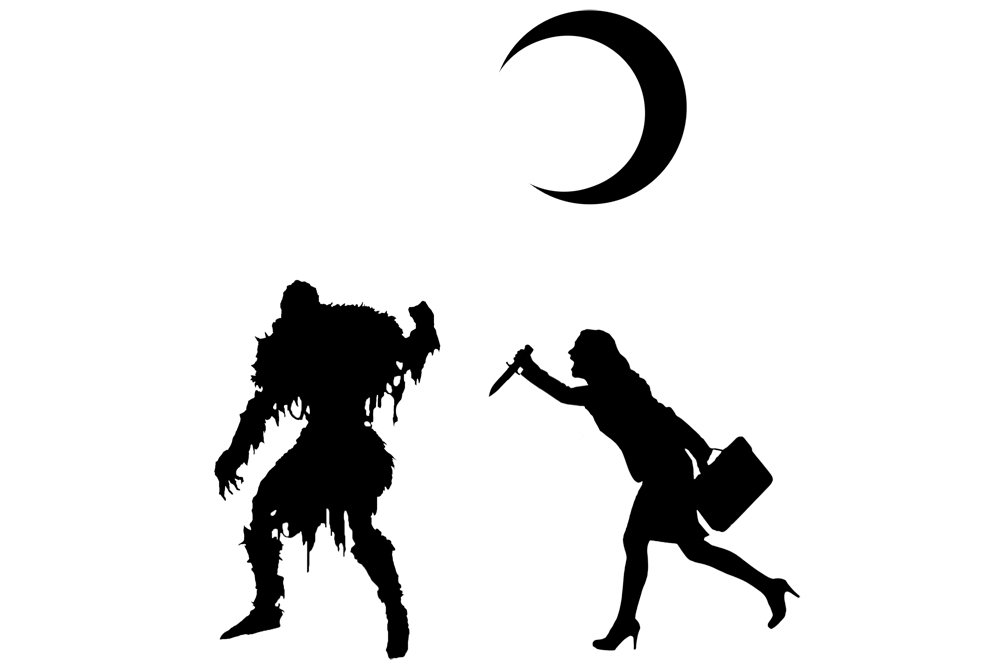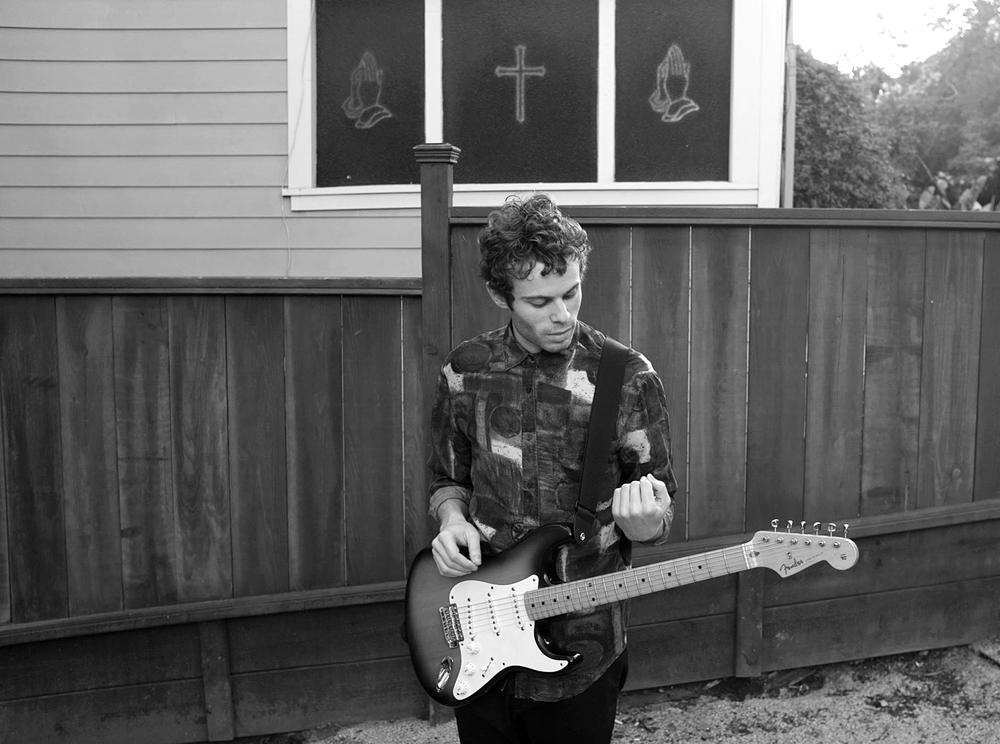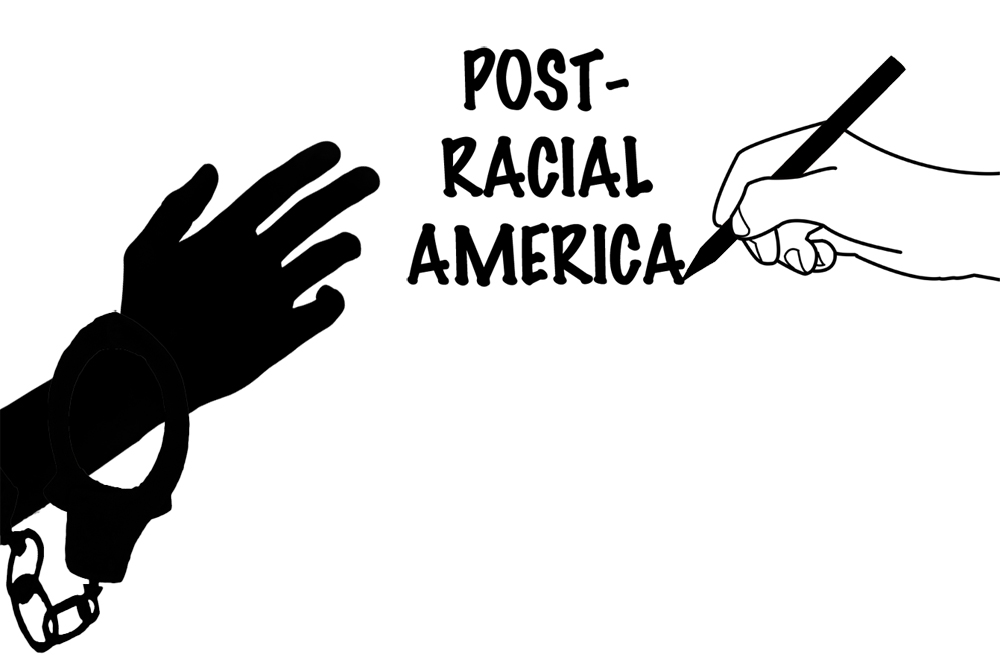At the close of recent horror release You’re Next, survivor Erin Harson confronts boyfriend Crispian and accuses him of plotting the murder of his family and Erin herself. Crispian claims that actually, Erin was planted as an outsider survivor who would unwittingly attest to a seemingly senseless massacre.
“But,” Crispian asks, “how were we supposed to know that you’re
really good at killing people? Which is really sort of weird, by the way.”
It is really sort of weird, because Erin’s quick logic and counter-violence undermines the horror genre’s expectations of a fearful and brainless victim. Erin sets booby traps for Crispian’s hired thugs, mercilessly bashes their heads in without question and even backtracks to the scene of the crime when they chase her away. She evokes uncommon knowledge of her horror scenario and flips the formula in order to defeat her pursuers.
In this way, You’re Next represents a trend in contemporary horror toward using postmodern metafiction, a brand of self-conscious fiction that contemplates its own form in an effort to exploit the instability of its structure.
Postmodern metafiction can irk me to no end. Forgive me, but I trust literature and film to help me organize my life’s philosophical and aesthetic chaos, or at least to let me forget about it. Creators often use postmodern metafiction to expose the flawed nature or fake-ness of fiction. Maybe you saw the newest Muppets movie in which the bad guys say “maniacal laugh” instead of maniacally laughing and the characters directly address the audience in order to challenge their own authority. It’s making fun of its own textuality. This defeatism just makes me think the filmmaker’s story is pointless and the heroes are uninspiring set pieces. Sadly, this seems to be the point. It takes the comfort and escapism out of it all.
Refreshingly, this doesn’t apply to metafiction in horror, for a couple of reasons.
Firstly because the horror genre commonly relies on the protagonist’s helplessness, and postmodern metafiction rethinks the weak victim and turns her into the agent protagonist. Thus Erin Harson overcomes her would-be murderers, which creates a sense of invention
and a new kind of satisfaction for the audience.
Second, horror filmmakers appear serious and heartfelt about their metafictional examination of horror.
The Cabin in the Woods shows a metafictitious battle between creator and creation, the control center that fabricates a horror scenario and the subjects who use their paranoid savvy to one-up the operation. It’s the rare occurrence of metafiction that lampoons and honors its genre while maintaining a thrilling narrative that oftentimes transcends its own abstract musings.
By way of a quick and strategic summary, the control center feeds the protagonists chemicals so they’ll travel to a cabin in the woods and adhere to the classic horror archetypes of the Whore, the Athlete, the Scholar, the Fool and the Virgin. The control center sacrifices these archetypes to ancient monster gods so the gods won’t rise and bring apocalypse to the human world. In order to pull this off, the controllers unleash a classic horror monster on the cabin, determined by one of a variety of classic horror props a protagonist fiddles with (a music box, a diary, a fortune teller machine, an amulet or an orb).
Once the monster is released, screenwriters Joss Whedon and Drew Goddard offer their meta fictitious diagnosis and prescription: The horror genre is tired, surmountable and should probably implode.
Stoner-philosopher Fool Marty Mikalski, who smokes enough weed to counteract the controllers’ chemicals, discovers and guides Virgin Dana Polk to the control center itself. They spitefully release all of the monsters in storage at the control center. This action brings about a metafictional montage of the creator’s destruction at the hands of his own clichéd conventions as the familiar faces of multifarious horror film monsters tear apart security guards, controllers and the station itself. Apocalypse imminent, Marty and Dana meet the director of the operation.
When the director declares that, in order to avoid the world’s end, Marty must sacrifice himself (the Virgin’s death is optional), Marty challenges, “Maybe that’s the way it should be, if you’ve got to kill all of my friends to survive. Maybe it’s time for a change.” Marty’s comment and the subsequent choice he and Dana make—to face apocalypse
instead of sacrificing themselves to the familiar flow—suggest a revision of the horror paradigm. Through metafiction, The Cabin in the Woods implores the genre to find a new kind of storytelling.
What this new horror movie looks like, I don’t know. Maybe
it’s a return to sincere but deeply thoughtful horror that characterizes the meta fictitious mind instead of becoming it, like the Scream series does. Maybe horror will actually conceptualize unheard-of monsters and protagonists. If it’s some sort of meta-metafiction by which the villain has a meta-understanding of the victim’s meta-understanding, I’m staging a hunger strike.
Either way, at least horror films like You’re Next and The Cabin in the Woods use postmodern metafiction to diagnose and fix the problem, not just point it out.







